-
What does the analog processing unit do ?
10/28/2016 at 15:20 • 0 commentsAs ultrasound image is borne by a ultrasound carrier, it is crucial to extract the envelope from the weak signal. That's what the module does, as detailed below:
![]()
-
Pushing the STM32 acquisition
09/22/2016 at 17:00 • 0 commentsAs I'm trying to get a signal around 1MHz, I'm also trying to get a proper acquisition.. the Feather WICED, sporting a STM32F205, should do the trick. I've been using two interleaved ADCs, and this is not so bad.. it gives the following results for the acquisition (and streaming over wifi):
![]() for an original signal which looks like
for an original signal which looks like -
Acquisition with a Feather WICED (STM32F205)
09/14/2016 at 17:53 • 0 commentsI've been playing with the small motherboard, with the two modules.
Having just added a servo, and a feather WICED to do some of the acquisition / control, the board is quite simple, powers using only the microusb port of this feather, and gives a (rough) image. This is mostly due to the fact that I'm having some issues with the envelope / correction detector.
Next steps? Getting the proper envelope, pushing data to wifi, and... that's all ;)
Curious? The setup looks like this :
![]() and, with a focus on the board itself.
and, with a focus on the board itself. ![]()
-
A STM32/arduino IDE challenge
09/10/2016 at 13:22 • 1 commentI've got quite a challenge here. I'm using and adafruit feather wiced, with a 3x2Msps ADC and running at 120Mhz.
Playing around with a simple analogRead() provides sub-100kHz acquisitions, far from what I'm expecting. So I've started playing with low-level code. I found a similar code, except it's for a STM32F1, and the port may have lost of the registers.. The code so far can be seen there.
What should we do to push the limits of this ADC and try to squeeze the 6Msps interleaved acquisition it can have?
The full question is here : https://github.com/adafruit/Adafruit_WICED_Arduino/issues/58 =)
-
Created a gitbook
08/25/2016 at 21:42 • 0 commentsRead all you can on a gitbook :
-
Getting an image from an ultrasound fantom
08/24/2016 at 08:43 • 0 commentsAcquiring a fantom imageThe following acquisition was done with an old mechanical ultrasound probe, along with the pulser module, the analog processing module. The acquisition was done with a beaglebone PRUDAQ at 10Msps. I'm not mentionning the power supply module.
You can download the raw data using this link.
The raw image
![]() The animated image
The animated imageComparing with the fantom
I guess the points we see are the points on the left hand of the fantom. The top of the fantom is not seen as the near field artifact is at goes till around 2cm (according to the probe specs).
Some Comments:As seen in the list of probes, the probe we've been using has the following characteristics:
- near field artifact till 2cm
- focal point at 7cm
- Lateral resolution of 4.2mm at 7cm depth
- Axial resolution of 1.3mm at focal depth
This matches with what we're seeing.
Setup:
-
Simulating the transducer with a DAC
08/10/2016 at 13:46 • 0 commentsUsing a Feather WICED (had it in my stuff): upon a pulse, the DAC sends a waveform:
which gets amplified properly
and gives a nice enveloppe!
Throw in a few diods to clip the signal at 1.5V before it gets to the PRUDAQ... and you have an emulated transducer in your hands =)
-
The HV+Pulser module has arrived
08/09/2016 at 08:25 • 0 commentsNo more to wait, here it is ! Simple to use (5V only), two signal pulses to switch the HV pulser on and off, two SMAs for connecting to the transducer, and to the analog processing, and a pin to route the signal through a stripboard to the analog processing unit.
![]() The modules, once assembled, look great =)
The modules, once assembled, look great =)![]() And the signal is clean as well, getting a good echo with an ATL3 :
And the signal is clean as well, getting a good echo with an ATL3 :Reading more on https://github.com/kelu124/echomods
-
Testing Murgen with a market probe
07/17/2016 at 13:31 • 0 commentsTrying to get a signal with another probe .. an ATL Access.Seeing good echoes, awesome! So I just need to get pictures now =)
-
Murgen's legacy: a breadboard ultrasound analog front end
07/10/2016 at 11:40 • 0 commentsMurgen's given birth!
I wanted to produce modules for ultrasound processing.. let's keep out the high voltage pulser, so let's focus on the analog front end. It is composed of:
- A time-gain-control (or a VGA) to compensate for the ultrasound attenuation
- An enveloppe detector, to actually get the echoes
- An amp to better stretch the signal before it goes to the...
- 3Msps ADC
![]()
![]() We can achieve quite good amplification a 120mVpp becomes a 700mV= enveloppe.
We can achieve quite good amplification a 120mVpp becomes a 700mV= enveloppe.
Read more on the dedicated echomods hackaday page and the very page for the release!For all code source, there's still the Github account to work as a reference.
Murgen: open source ultrasound imaging
An open-source ultrasound imaging dev kit side project
 kelu124
kelu124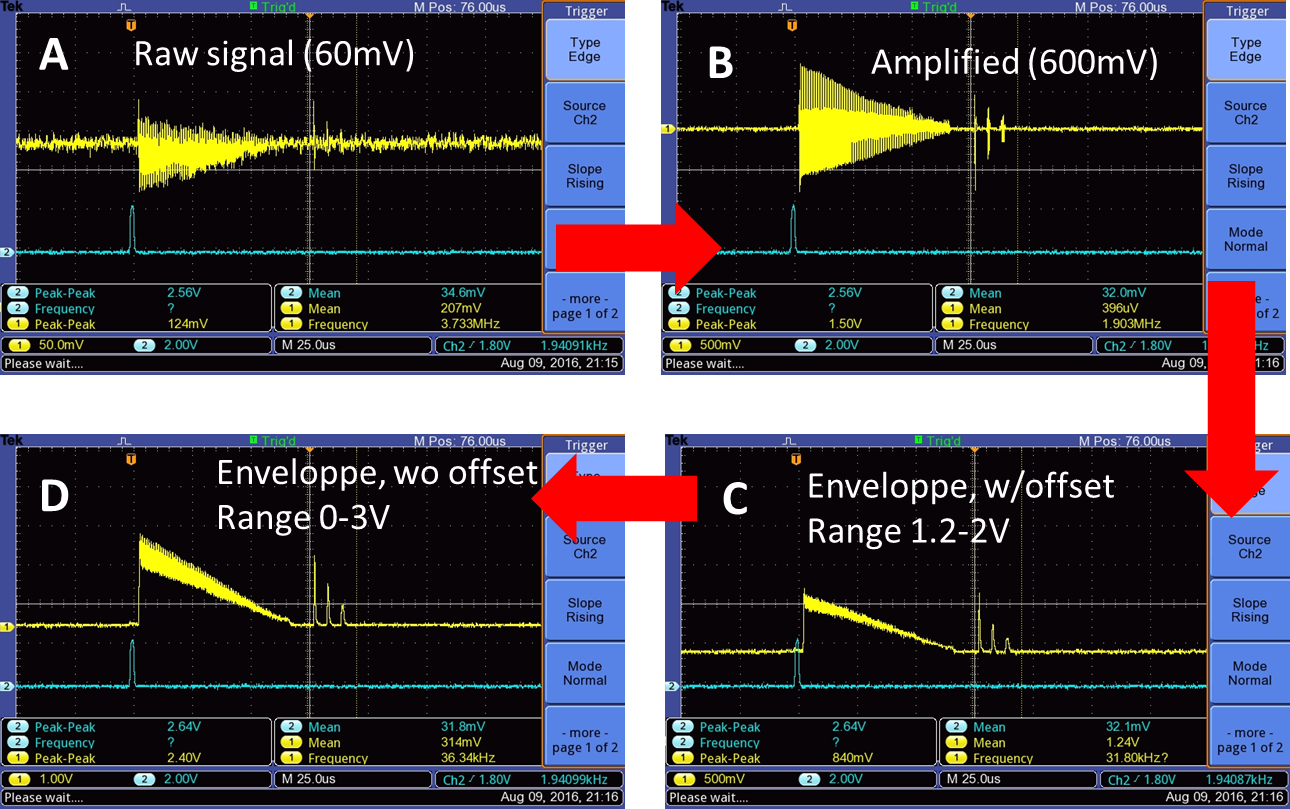
 for an original signal which looks like
for an original signal which looks like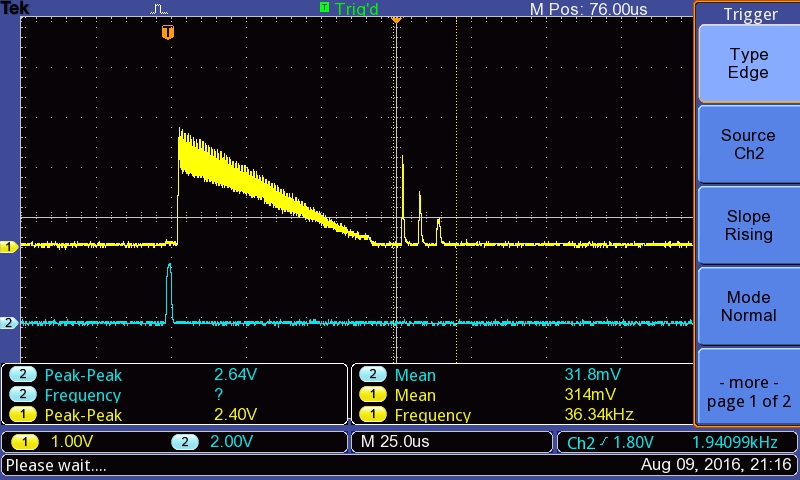
 and, with a focus on the board itself.
and, with a focus on the board itself. 
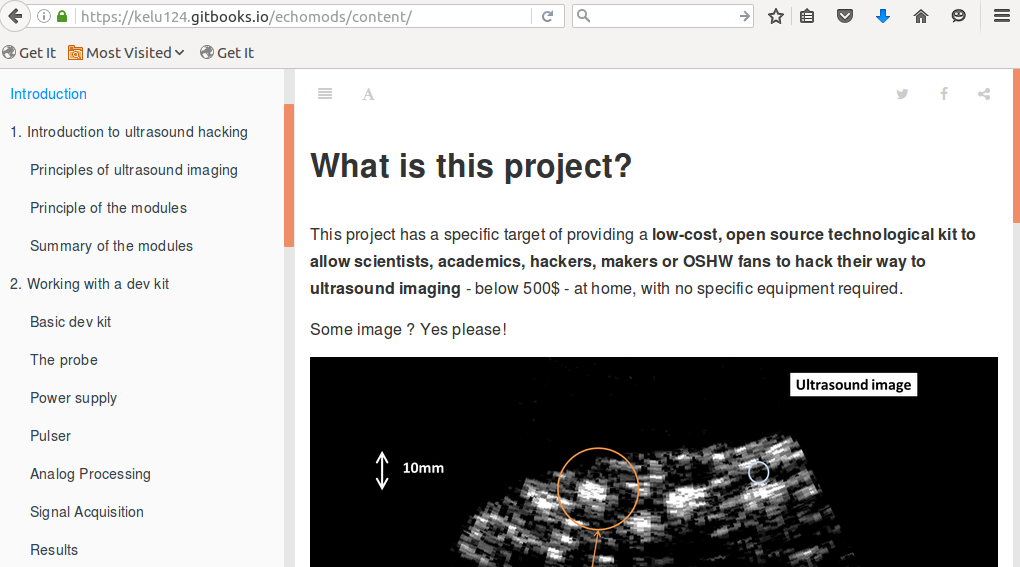
 The animated image
The animated image



 which gets amplified properly
which gets amplified properly and gives a nice enveloppe!
and gives a nice enveloppe! Throw in a few diods to clip the signal at 1.5V before it gets to the PRUDAQ... and you have an emulated transducer in your hands =)
Throw in a few diods to clip the signal at 1.5V before it gets to the PRUDAQ... and you have an emulated transducer in your hands =) The modules, once assembled, look great =)
The modules, once assembled, look great =)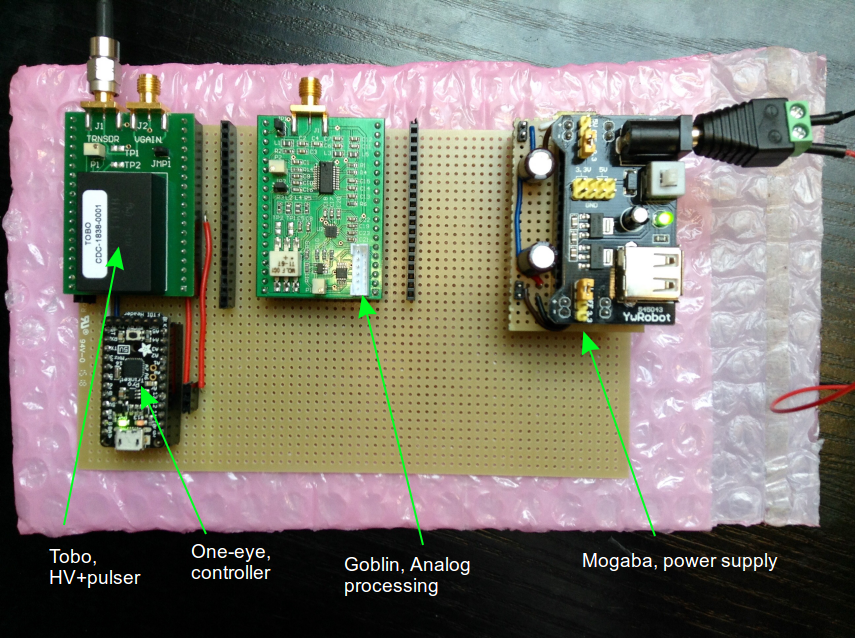 And the signal is clean as well, getting a good echo with an ATL3 :
And the signal is clean as well, getting a good echo with an ATL3 :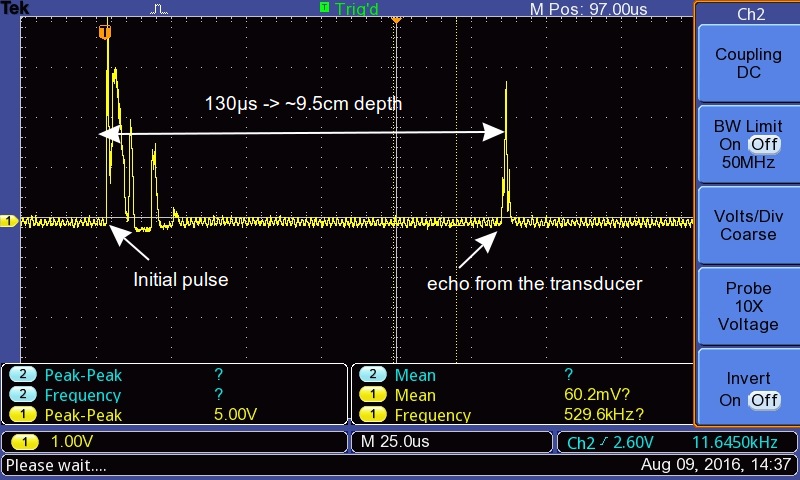
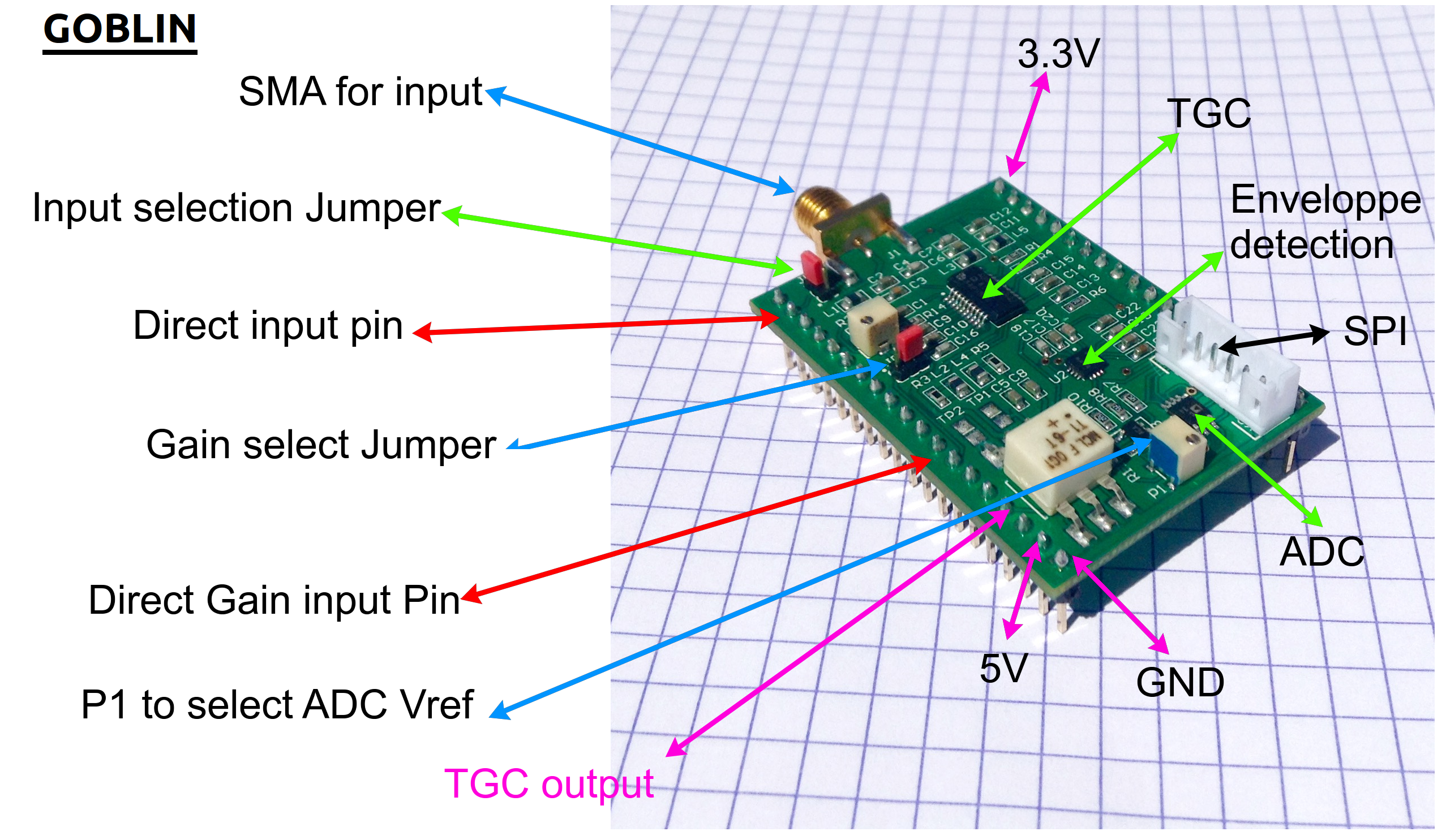
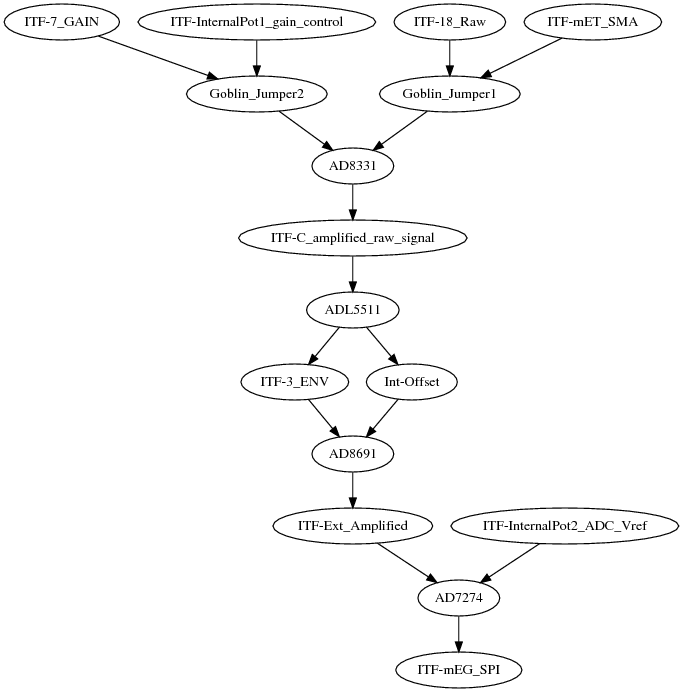 We can achieve quite good amplification a 120mVpp becomes a 700mV= enveloppe.
We can achieve quite good amplification a 120mVpp becomes a 700mV= enveloppe.